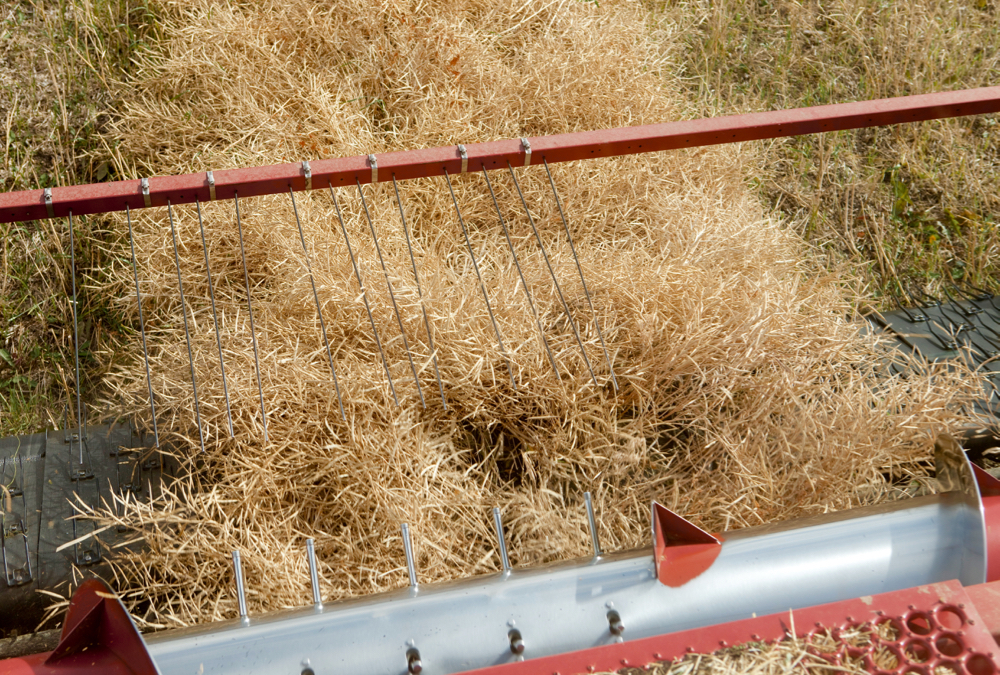Ontario has its first case of clubroot disease in canola — and further testing has confirmed clubroot in canola fields across the province.
During the 2016 growing season an agronomist in the Verner area of northern Ontario examined a canola field and found the distinctive clubbed roots, said Meghan Moran, canola and edible bean specialist with the Ontario Ministry of Agriculture, Food and Rural Affairs (OMAFRA) at Stratford.
The agronomist sent a sample for testing and, after confirmation of the disease, contacted the ministry.
“Treat it with respect and really focus on reducing spread to other fields,” said Moran.
Read Also

Alberta harvest wrapping up: report
Harvest operations advanced to 96 per cent complete in Alberta as of Oct. 7, with only a few late-seeded cereal and canola fields remaining, according to the latest provincial crop report.
The disease can have a significant yield impact, although the first diagnosed field in Verner was harvested normally.
Clubroot has been found in Ontario in cole crops, such as cabbage, turnip or broccoli, but this is the first time it has been diagnosed in canola. The oilseed is grown in northern Ontario and in a fairly narrow strip of growing area in the northern part of southern Ontario, south and east of Georgian Bay across to the area around Ottawa. Vegetable crops are not grown on a large scale in the same area.
Clubroot has been found in canola in Western Canada, especially central Alberta, since the early 2000s. It has more recently been found in canola in Manitoba, but is not yet widespread. It has also been sporadically found since 2011 in surveys in Saskatchewan.
After the first case was confirmed, OMAFRA undertook a survey of soils in canola-growing areas. The survey looked at 95 samples, including 68 from northern Ontario (Verner and New Liskeard areas) and 27 from southern Ontario (Renfrew, Bruce, Grey, Dufferin and Wellington counties). It found eight positive fields in the northern group of samples and three in the southern group. All samples came from canola fields.
The next step, currently underway, is to determine pathotypes for all of the positive samples to identify the strains of clubroot in Ontario.
This is valuable information, as the pathotype will determine if the Ontario disease is the same as western Canadian strains; if clubroot-resistant varieties will have an effect in Ontario; and even if the same strains are present in different growing areas in Ontario.
Moran doesn’t believe much will be gained trying to figure out how the disease got to Ontario canola fields. It’s better to dedicate energy to preventing its spread to other fields and areas, she said.
There are several management practices associated with monitoring for clubroot and limited its spread. They include:
- Scout fields with the understanding that the disease is now confirmed in Ontario.
- Understand that the disease often shows up first at the entrance to fields where it has been deposited by contaminated equipment. Take soil samples first from that area of the field.
- Sanitize equipment, especially when it has been in contaminated fields, by cleaning off all soil and using bleach.
- Leave contaminated fields to harvest last.
- Longer crop rotation has a significant limiting effect on the disease, if the crops between canola years are not hosts for the spores.
- Above ground symptoms include yellowing, wilting and stunting. These symptoms mimic nutrient deficiencies and other diseases. Pull up plants to check the roots for clubbing or galling.
- Premature ripening is also a symptom.
“It is manageable, but only if you take it seriously,” Moran said.
For more information visit the Canola Council of Canada’s clubroot website.
— John Greig is a field editor for Glacier FarmMedia based at Ailsa Craig, Ont. Follow him at @jgreig on Twitter.
















